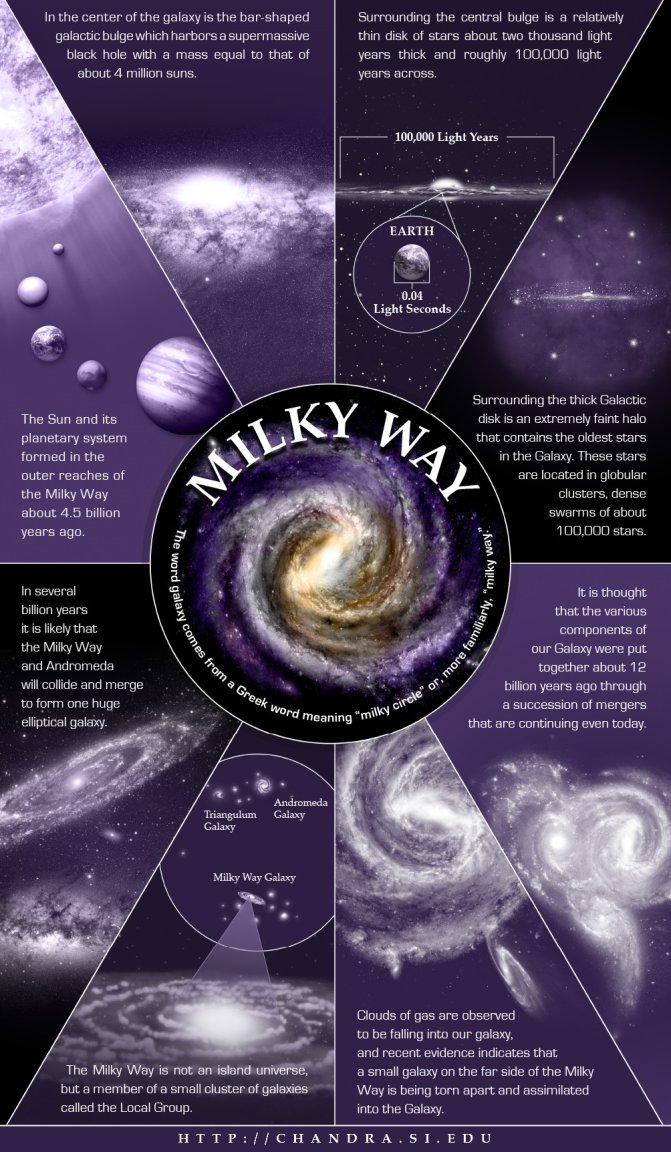

The Milky Way is the galaxy in which we currently reside. It is classed as a barred spiral galaxy, although this is actually fairly difficult to determine from within the galaxy. It’s sort of like trying to determine what a house looks like from the outside by looking out of a window when you are inside of it. Below are are of the most important facts that you need to know in order to understand our galaxy:
- The Milky Way is estimated to have somewhere between 200-400 billion stars. Unfortunately, it is really quite difficult to tell exactly how many there are. Being in one of the outer spiral arms of the galaxy, there is a lot of dust all around us. That dust gets quite thick when you’re looking towards the galactic center, so this really impedes our view. Not only that, but we can only see our side of the Milky Way. Since the galaxy is disk shaped, and we’re within the disk, everything on the other side is hidden from us. As for the exact number of stars in the galaxy, it’s probably not that important to have an exact figure. Indeed, such a figure is likely impossible, as there are constantly stars popping in and out of existence and so many red dwarfs and brown dwarfs that are just too dim to detect.
- The Milky Way houses a supermassive black hole at its center…a black hole of about four million solar masses. As supermassive black holes go, this is fairly average (but a bit on the smaller side). As for the actual mass of the Milky Way, it is fairly difficult to determine. One study by McMillan puts the stellar mass of the galaxy at ~64.2 billion solar masses with the total mass being ~1.26 trillion solar masses. Another report puts the galaxy mass [DM included] at ~1 trillion solar masses which is in general smaller than the average galactic mass, 65 billion solar masses. “COSMOS” magazine (2009) mentions another study where the mass is thought to be 50% larger than previous studies and to have a faster rotational speed as well.
Basically then, from three separate articles, we’re getting three separate figures. This just goes to show the difficulty of studying the Milky Way while we’re trapped inside of it.
- The actual formation of the Milky Way is another hot topic of debate and has been for many years. Unlike some of the previous topics, like trying to constrain the mass of the galaxy or even what we look like from the outside (which are issues because of our location within the galaxy), the problem of galaxy formation is our inability to view our own past. Interestingly, the Big Bounce theory asserts that, before the our universe existed, there were a plathors of other universes that had the same basic physics as out own.
- One truly amazing thing about the universe is that we can actually study what the universe was like in it’s earlier history as the higher redshift we peer at, the further we’re looking back into the past. There does become a point though when we can’t look back any further and it is at this point, where there is no observational evidence, this the two main and opposing theories come into play.
- The Top-Down Model and the Bottom-Up Model. These two opposing theories govern the way to which all of the first galaxies formed, thus the way that the Milky Way formed.
Now that you have an understanding of the fundamental principles, here are some more interesting facts:
